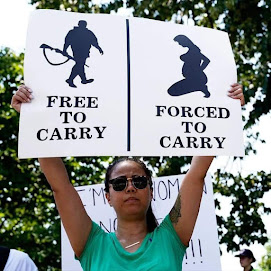Somalia's Humanitarian Catastrophe Worsens
 Already struggling to survive with little or no access to even basic health-care services, Somalis experienced some of the worst violence in over a decade in 2008, with people in the central and southern parts of the country living under increasingly deteriorating humanitarian conditions. While difficult to verify given the collapsed health-care system, Somalia has some of the worst health indicators in the world: one in ten women die during child birth and more than one in five children die before their fifth birthday. The impact of the war on childhood malnutrition was exacerbated by skyrocketing food prices and a prolonged drought in the country.
Already struggling to survive with little or no access to even basic health-care services, Somalis experienced some of the worst violence in over a decade in 2008, with people in the central and southern parts of the country living under increasingly deteriorating humanitarian conditions. While difficult to verify given the collapsed health-care system, Somalia has some of the worst health indicators in the world: one in ten women die during child birth and more than one in five children die before their fifth birthday. The impact of the war on childhood malnutrition was exacerbated by skyrocketing food prices and a prolonged drought in the country. More on Somalia here.
Critical Need of Assistance in Ethiopia's Somali Region
 Continued violence and harsh climatic conditions have made living a constant struggle for people in the crisis-affected area of Ethiopia’s Somali region this year. Caught between rebel groups based in the region and government forces intent on quelling the rebellion, the largely nomadic population has become ever more isolated from basic services and humanitarian assistance.
Continued violence and harsh climatic conditions have made living a constant struggle for people in the crisis-affected area of Ethiopia’s Somali region this year. Caught between rebel groups based in the region and government forces intent on quelling the rebellion, the largely nomadic population has become ever more isolated from basic services and humanitarian assistance. Due to dangers and restrictions associated with importing goods to the region, the availability of food and other essential items in local markets has drastically decreased and price spikes made basic staples largely unaffordable. At the same time, severe restrictions on movements in certain zones have seriously increased the vulnerability of nomadic people who are unable to search for water and food for their livestock. People have seen their harvests, food stocks, grazing lands, and livestock destroyed by a combination of drought and as a result of the conflict. Some have been directly exposed to the violence.
Beyond the International Spotlight, Critical Health Needs in Myanmar Remain Unmet
 On May 2, 2008, Cyclone Nargis, in all its horror, threw Myanmar back into the international spotlight, devastating the Irrawaddy Delta and leaving an estimated 130,000 people missing or dead. Governed by a military regime since 1962 and enduring low-intensity conflict in certain areas, the disaster was the latest blow to a people largely forgotten by the outside world. Meanwhile, chronic and urgent health needs remain unmet throughout the country, compounded by a lack of investment by both the government and the international community. State health expenditure was $0.70 USD per person in 2007, just 0.3 percent of the country’s gross domestic product. The level of international humanitarian aid was around $3 USD per person, the lowest rate worldwide. The selective blindness to countrywide needs, not least in the areas of HIV/AIDS, tuberculosis, and malaria, continues to cost the lives of thousands of people year upon year and demands attention.
On May 2, 2008, Cyclone Nargis, in all its horror, threw Myanmar back into the international spotlight, devastating the Irrawaddy Delta and leaving an estimated 130,000 people missing or dead. Governed by a military regime since 1962 and enduring low-intensity conflict in certain areas, the disaster was the latest blow to a people largely forgotten by the outside world. Meanwhile, chronic and urgent health needs remain unmet throughout the country, compounded by a lack of investment by both the government and the international community. State health expenditure was $0.70 USD per person in 2007, just 0.3 percent of the country’s gross domestic product. The level of international humanitarian aid was around $3 USD per person, the lowest rate worldwide. The selective blindness to countrywide needs, not least in the areas of HIV/AIDS, tuberculosis, and malaria, continues to cost the lives of thousands of people year upon year and demands attention.More on Myanmar here.

































No comments:
Post a Comment